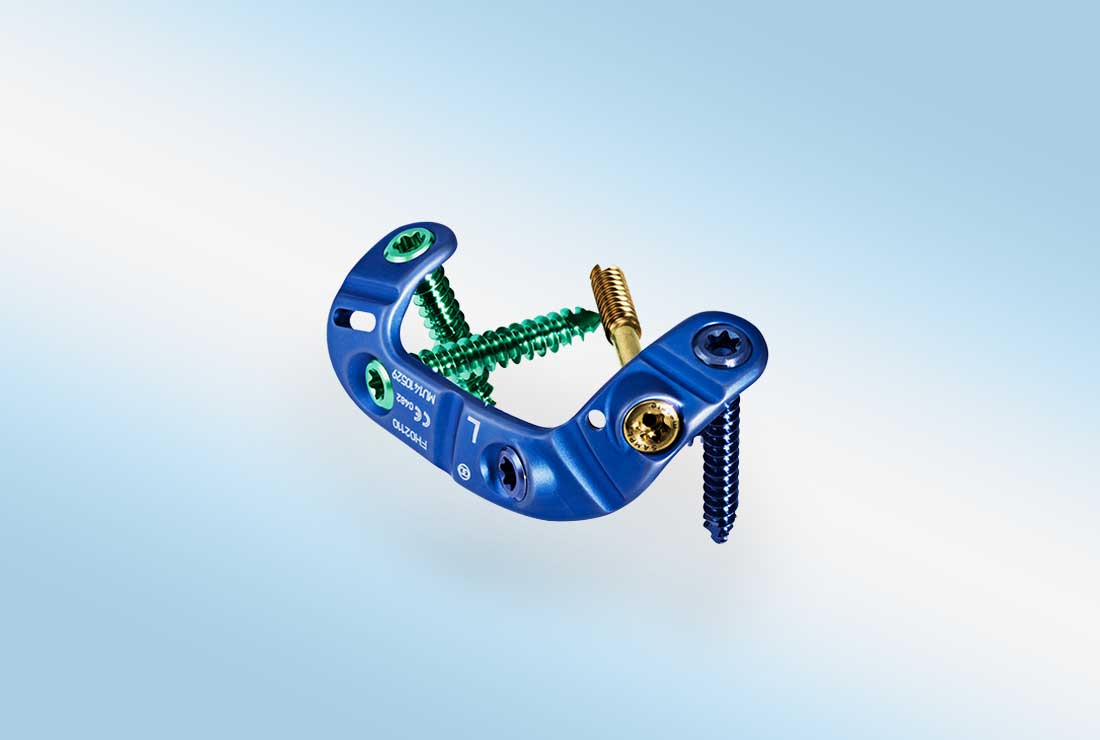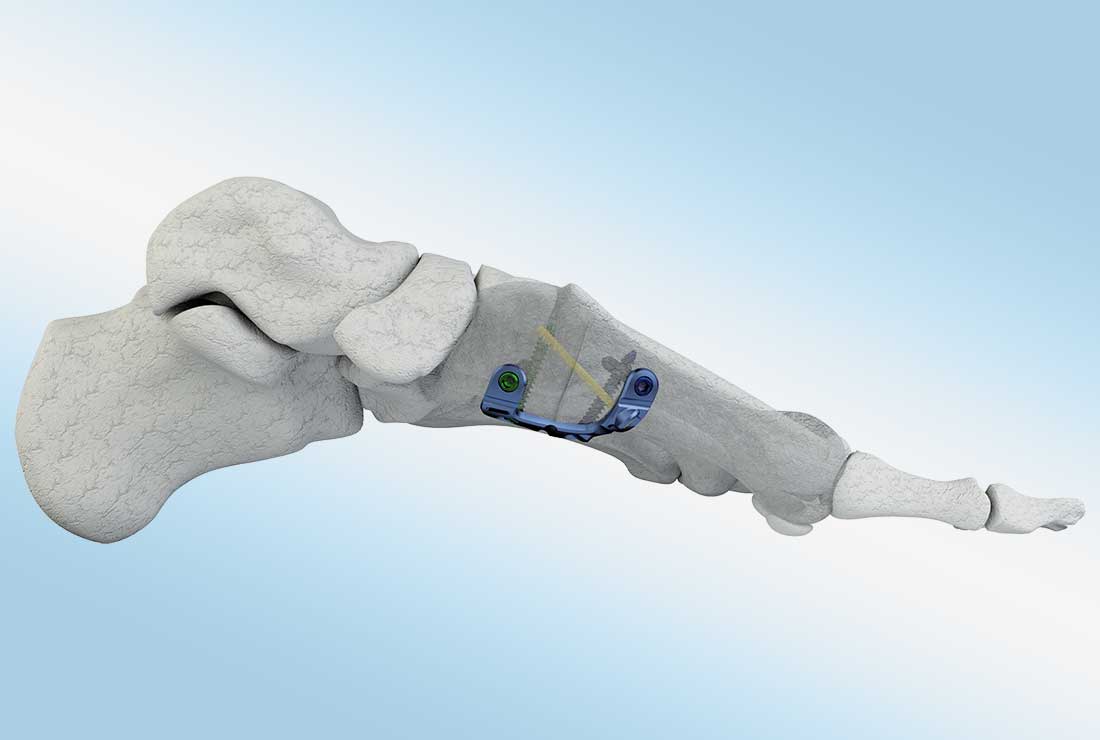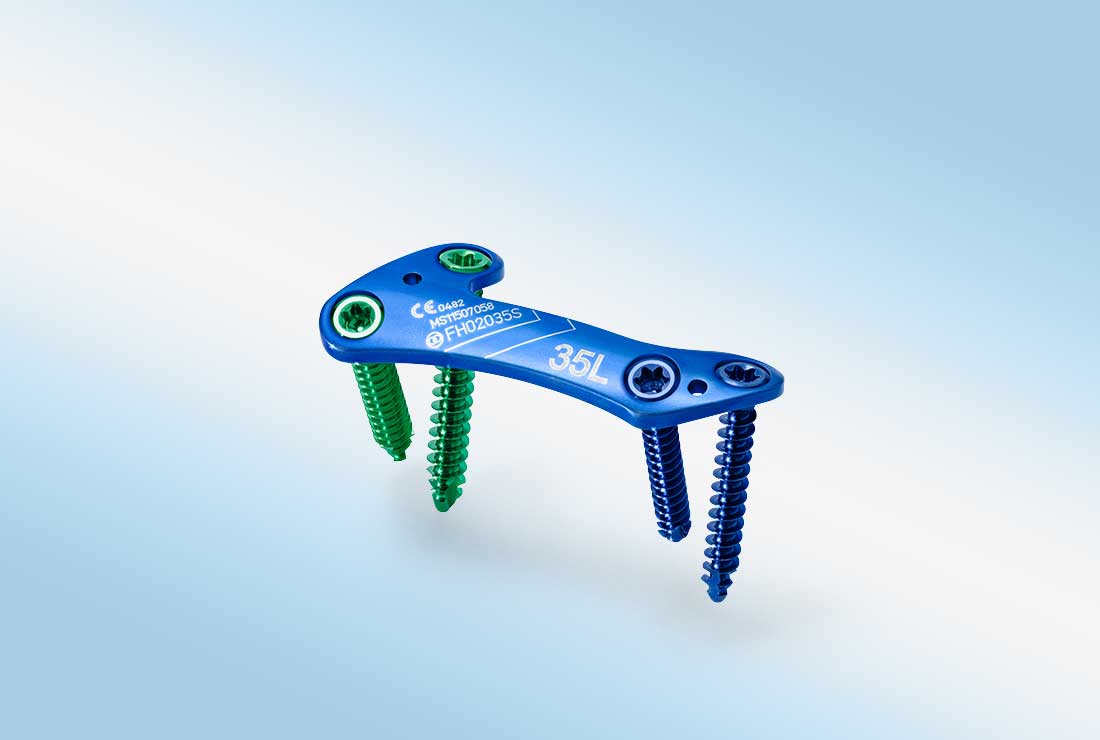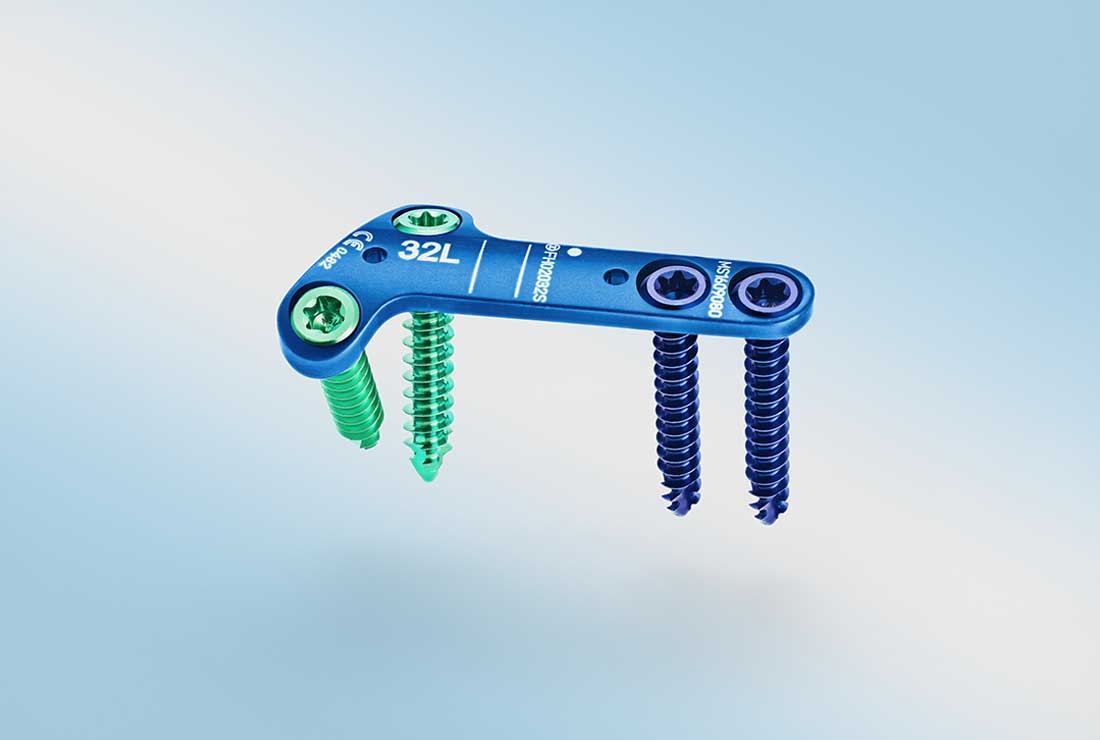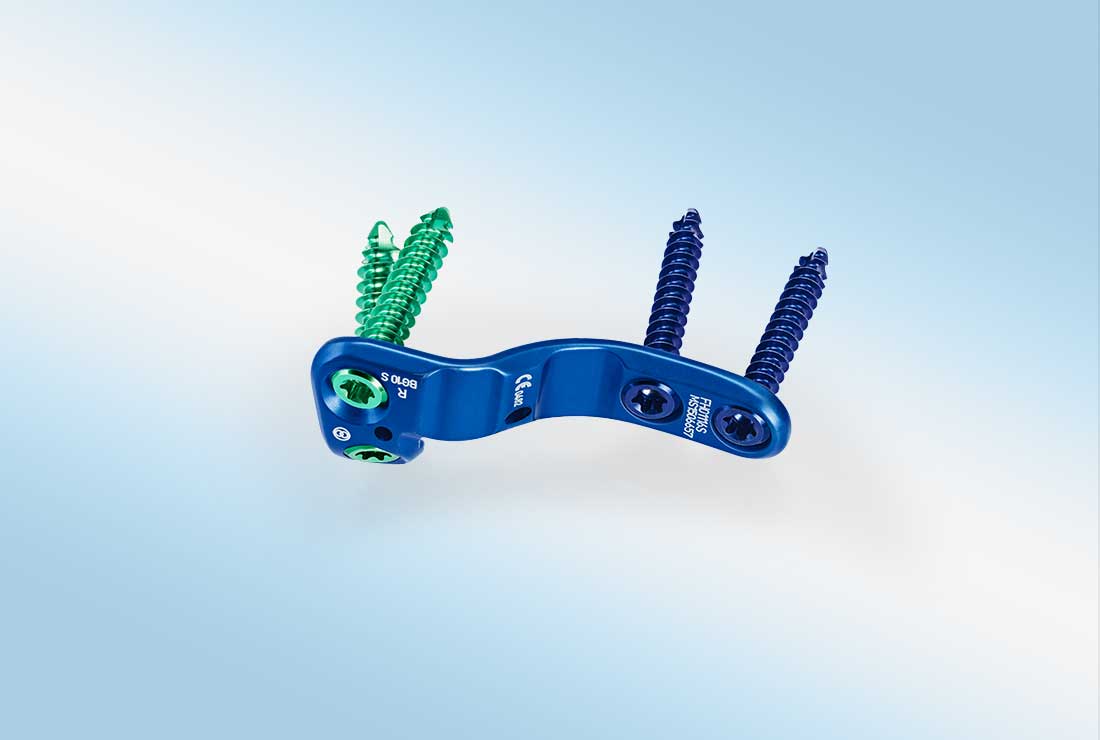Disclaimer and contact information
About surgical techniques:
Proper surgical procedures and techniques are the responsibility of the medical professional. The guidelines contained herein are furnished for information purposes only. Each surgeon must evaluate the appropriateness of the procedures based on his or her personal medical training and experience. Prior to use of any Merete systems, the surgeon should refer to the product package insert for complete warnings, precautions, indications, contraindications and adverse effects. Package inserts are also available by contacting Merete Technologies, Inc.
About E-IFUs:
If you have any further questions about the sterilization processes after reading our instructions, contact us at 630-869-1091 or service@merete-medical.com.
MetaFix™ PlantarMAX™
Plantar arthrodesis after lapidus
The MetaFix™ PlantarMax™ locking plate is designed as the first plantar/medial Lapidus fixation plate. It takes advantage of the biomechanically superior placement on the tension side of tarsometatarsal joint (TMT1) in Hallux Valgus interventions. A medial incision allows adequate exposure of the TMT1 joint for both joint preparation and plate fixation. Additionally, fixation on the tension side of the joint is superior to dorsal or medial fixation and reduces non-union rates through compressing osteotomy surfaces as the patient proceeds to weight bearing.
The MetaFix™ PlantarMax™ Lapidus Plate is designed with two plantar locking screws, two medial locking screws and an interfragmentary compression screw that is inserted through the plate and into cuneiform Specially designed bending zones allow the surgeon to accommodate varying patient anatomy by bending the plate according to the subjacent. Thus, the MetaFix™ PlantarMax™ locking plate achieves compression as well as rigid, stable fixation that facilitates early weight bearing with little soft-tissue interference.
Technical Specifications
- The Plate and screws made of titanium alloy (Ti6AI4V ELI, ISO 5832-3, ASTM F136)
- Low Profile, anatomically formed locking plates for left and right feet
- Used with 3.0 mm and 3.5 mm MetaFix™ LS locking screws and a dorsal cannulated, partially threaded, headed compression screws
- K-wire holes in the plate allow temporary fixation for locking screw insertion
FEATURES
- Plantar Lapidus procedure to fuse bone fragments on the tension side of the TMT1 joint
- Large correction potential for mild and severe Hallux Valgus interventions close to apex of the deformity
- Allows the de-rotation of the first ray and addresses Hallux Valgus in the coronal plate (triplanar correction) to planarize the sesamoids
- Reduced relapse rates
- Proximal medial and distal U-shaped plate extension for optimal fixation using unidirectional locking screws
- Biomechanically optimal placement of the plate on the tension side of the joint allows early weight-bearing and rapid mobilization
- Plantar locking plate position is covered with thick muscle belly of the abductor hallucis
- Offering a cosmetically advantageous plantar scar
- Correction of medium and large intermetatarsal angles, even in case of unsuccessful corrections in the shaft area
- High primary stability without correction loss due to angular stability
- The MetaFix™ PlantarMax™ Plate offers crossed proximal and distal screw configurations
- Bending zones allow adaptability to the situation without damaging the threaded holes
- K-wire holes on the plate allow temporary fixation
Indications
Fixation of fresh fractures, revision procedures, joint fusion, and reconstruction of small bones of the hand, feet, wrist, ankles, fingers, and toes.



